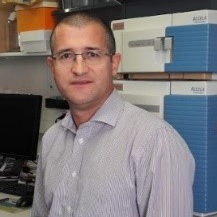Bacterial Cellulose Composites
A special issue of Applied Sciences (ISSN 2076-3417). This special issue belongs to the section "Materials Science and Engineering".
Deadline for manuscript submissions: closed (30 November 2018) | Viewed by 20473
Special Issue Editors
Interests: production and application of biogenic nanofibers (bacterial cellulose and protein fibrils); nanostructured biocomposites; bio-based materials for biomedical applications (wound healing, drug delivery and 3D-bioprinting); biocomposites and functional paper materials; chemical modification of (nano)cellulose fibers and other polysaccharides and their characterization and applications; chemistry of lignocellulosic materials (cellulose, wood, cork, etc.)
Special Issues, Collections and Topics in MDPI journals
Interests: natural products; biorefinery; gc-ms; biobased polymers; HPLC-MS; extractives; biobased (nano)composites
Special Issues, Collections and Topics in MDPI journals
Interests: sustainable use of biopolymers (nanocellulose, chitosan, pullulan, proteins, etc.) for the design of functional nanostructured materials for biomedical (e.g., drug delivery and wound healing) and technological (e.g., active packaging, fuel cells, and water remediation) applications
Special Issues, Collections and Topics in MDPI journals
Special Issue Information
Dear Colleagues,
The bacterial cellulose fan club has witnessed a massive increase in its number of members, mainly due to the unique features of this exquisite and extraordinary nanoscale form of cellulose. The high purity, biocompatibility, biodegradability, water-holding capacity, crystallinity, and excellent mechanical properties have expanded the application horizons of this biopolymer (and materials thereof) to a multitude of domains, spanning from the food industry to specific technological and biomedical applications.
This Special Issue will compile recent advances of leading researchers in the field of bacterial cellulose-based nanocomposites, particularly in what concerns their production, properties, and applications. Therefore, nanocomposites fabricated with diverse partners, including (but not limited to) synthetic and natural polymers, bioactive compounds and inorganic nanoparticles, are more than welcome to the Special Issue on “Bacterial Cellulose Composites”.
Prof. Dr. Carmen S. R. Freire
Prof. Dr. Armando J. D. Silvestre
Dr. Carla Vilela
Guest Editors
Manuscript Submission Information
Manuscripts should be submitted online at www.mdpi.com by registering and logging in to this website. Once you are registered, click here to go to the submission form. Manuscripts can be submitted until the deadline. All submissions that pass pre-check are peer-reviewed. Accepted papers will be published continuously in the journal (as soon as accepted) and will be listed together on the special issue website. Research articles, review articles as well as short communications are invited. For planned papers, a title and short abstract (about 100 words) can be sent to the Editorial Office for announcement on this website.
Submitted manuscripts should not have been published previously, nor be under consideration for publication elsewhere (except conference proceedings papers). All manuscripts are thoroughly refereed through a single-blind peer-review process. A guide for authors and other relevant information for submission of manuscripts is available on the Instructions for Authors page. Applied Sciences is an international peer-reviewed open access semimonthly journal published by MDPI.
Please visit the Instructions for Authors page before submitting a manuscript. The Article Processing Charge (APC) for publication in this open access journal is 2400 CHF (Swiss Francs). Submitted papers should be well formatted and use good English. Authors may use MDPI's English editing service prior to publication or during author revisions.
Keywords
- Bacterial cellulose
- nanocomposites
- polymer-matrix composites
- aerogels
- hybrid materials
- biomedical applications
- technological applications







